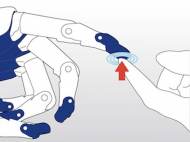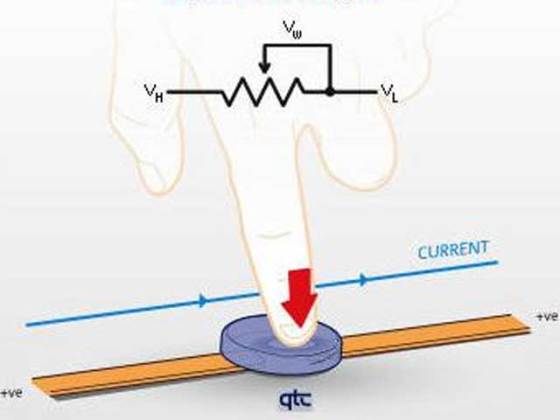Peratech Limited QTC – new generation of tactile robotic skin?
 As robotic devices continue to make inroads to our daily life, their ability to understand the presence and interaction with humans and other objects within a space becomes critically important. Peratech Limited, a company devoted to the development of new materials designed for touch technology, has announced that they have been commissioned by the MIT Media Lab to develop a new type of electronic ‘skin’ that enables robotic devices to detect not only that they have been touched but also where and how hard the touch was.
As robotic devices continue to make inroads to our daily life, their ability to understand the presence and interaction with humans and other objects within a space becomes critically important. Peratech Limited, a company devoted to the development of new materials designed for touch technology, has announced that they have been commissioned by the MIT Media Lab to develop a new type of electronic ‘skin’ that enables robotic devices to detect not only that they have been touched but also where and how hard the touch was.
The key to the sensing technology is Peratech’s patented ‘QTC’ materials. QTC’s, or Quantum Tunnelling Composites, are a new material type which provides a measured response to force made by touch by changing its electrical resistance. This enables a simple electronic circuit within the robot to determine touch. Being easily formed into unique shapes – including being covered over an object, QTC’s mimic how human skin works to detect touch.
QTC’s are electro-active polymeric materials made from metallic or non-metallic filler particles combined in an elastomeric binder. These enable the action of ‘touch’ to be translated into an electrical reaction, enabling a vast array of devices to incorporate very thin and highly robust ‘sensing’ of touch and pressure. QTC’s unique properties enable it to be made into force sensitive switches of any shape or size. QTC switches and switch matrices can be screen printed allowing for development and integration of switches that are as thin as 75 microns.
QTC consumes small amounts of power because the interfaces can be designed with no start resistance. So if there is no pressure, the switch draws no power and passes no current. Importantly, when pressure is applied, the resistance drops in proportion to the amount of pressure which allows sophisticated human machine interface designs to react to the variations in pressure. Further, by applying the Peratech’s patented xy scanning technology, the robot equipped with such a matrix of sensors could be able to detect where it was touched.
Peratech’s QTC technology has an established track record for use in robotics, having previously been adopted by NASA for their Robonaut device and by Shadow Robot in the UK, producers of what is widely regarded as the World’s most advanced robotic hand, which have utilized QTC to sense ‘touch’. This research project is hoped to produce results which could soon be applied to a range of robotics projects that MIT works upon.










This android is an honor to the legacy of Philip K Dick. Moreover, it’s being used in one of the most advanced cognitive A.I. projects in the world. Someday he might be posting comments of his own on YouTube. Someday he may surpass mere human levels of genius, and give humanity some reckoning for our nonsense.